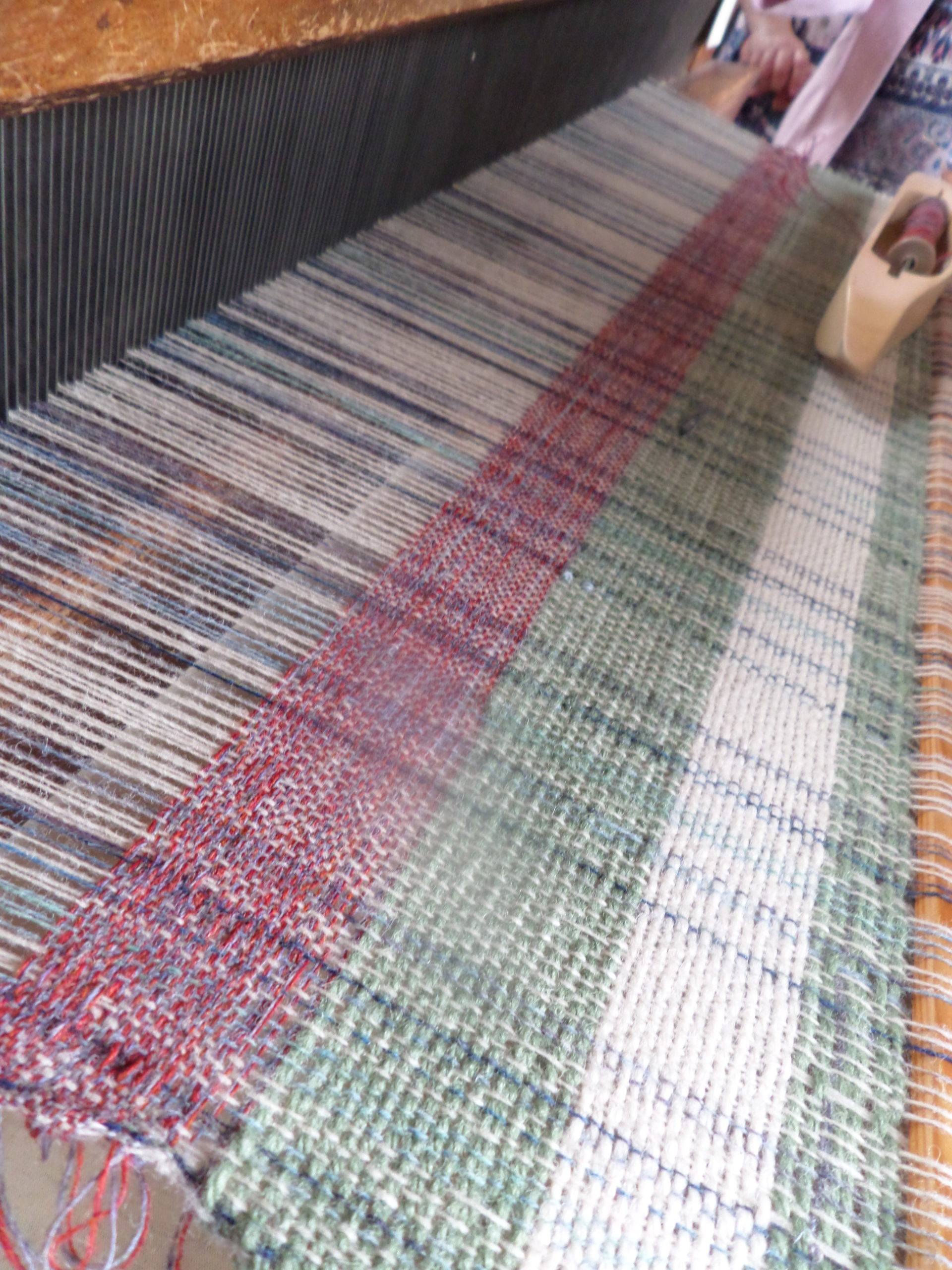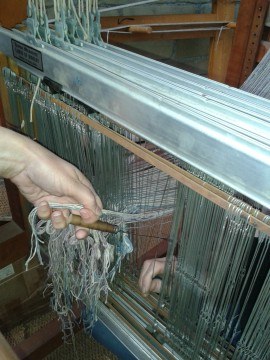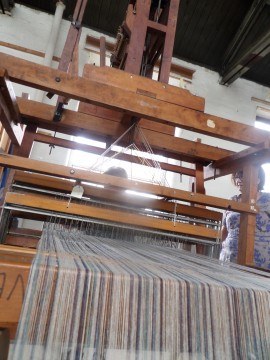
The terms warp and weft are words associated with textiles, specifically those that are woven. In the literal sense, they are the technical terms for the two types of thread used to create a finished woven product. The warp is the tightly stretched lengthwise core of a fabric, while the weft is woven between the warp threads to create various patterns. Some people also call the weft the “filler” thread as it fills in the design. To weave any kind of textile, the weaver needs to start with the warp threads. Warp threads tend to be stronger and coarser, because they must be able to withstand tight stretching. They also provide a core of support for the finished piece, giving the textile body and form. The warp is stretched onto a loom before weaving begins, and it may be coiled onto a spool for very long or large projects. This spool is unwound as needed, while the finished weaving on the other side is rolled up to get it out of the way.

The weft threads make up the body of the fabric. They may be one colour, or they may be multicolour, creating patterns and forms. Some weavers also like to use different types of material for an assortment of textures. In many cases, the weft threads are attached to a shuttle, which is run back and forth through the warp. On weaving machines, setting up the weft can get rather complex, especially when patterns are being made.

The word for weft comes from an Old English word, wefan, which means “to weave.” Since these threads are the ones that are literally woven in a textile, this origin makes sense. “Warp,” on the other hand, comes from an Old Norse word, varp, which means “the cast of a net.” The warp of a fabric, in other words, acts like a net to capture the weft, holding these threads firmly so that they will not escape, causing the textile to unravel.
Back To Blog Next (Darklight to illuminate Sunny Bank Mills) Prev (Volunteers in the Archive)Tags
Museum & Archive Arts & Culture General
